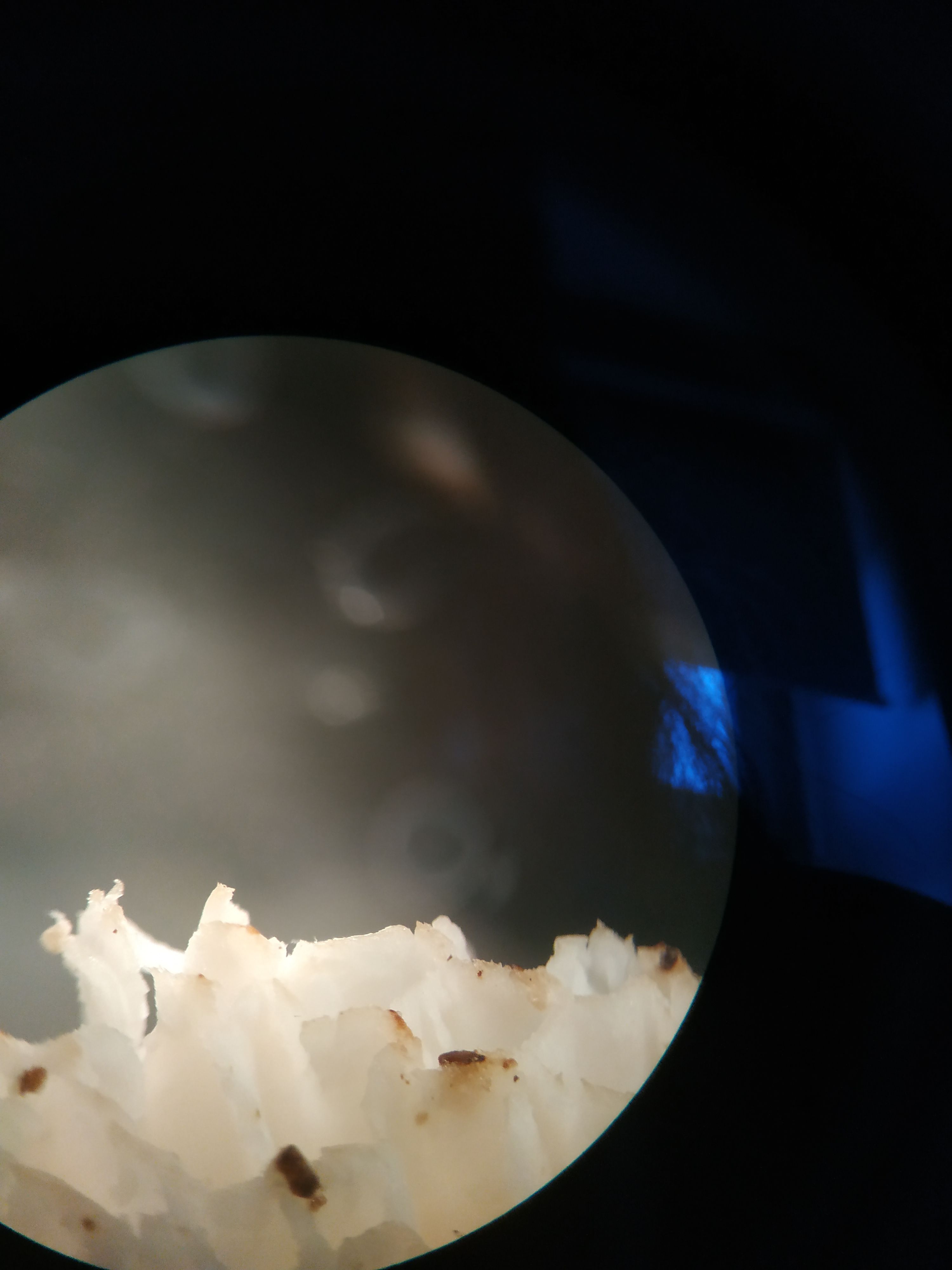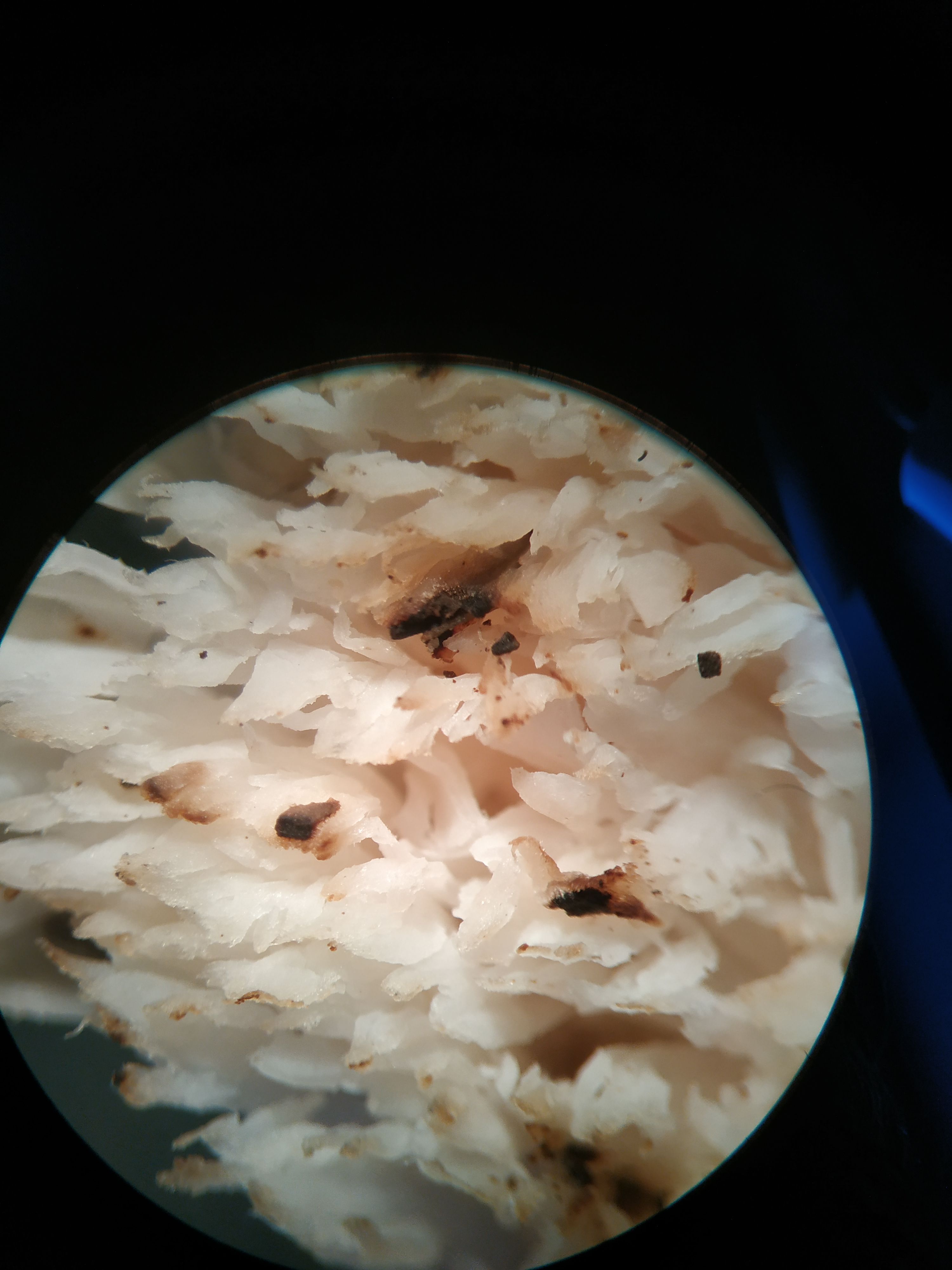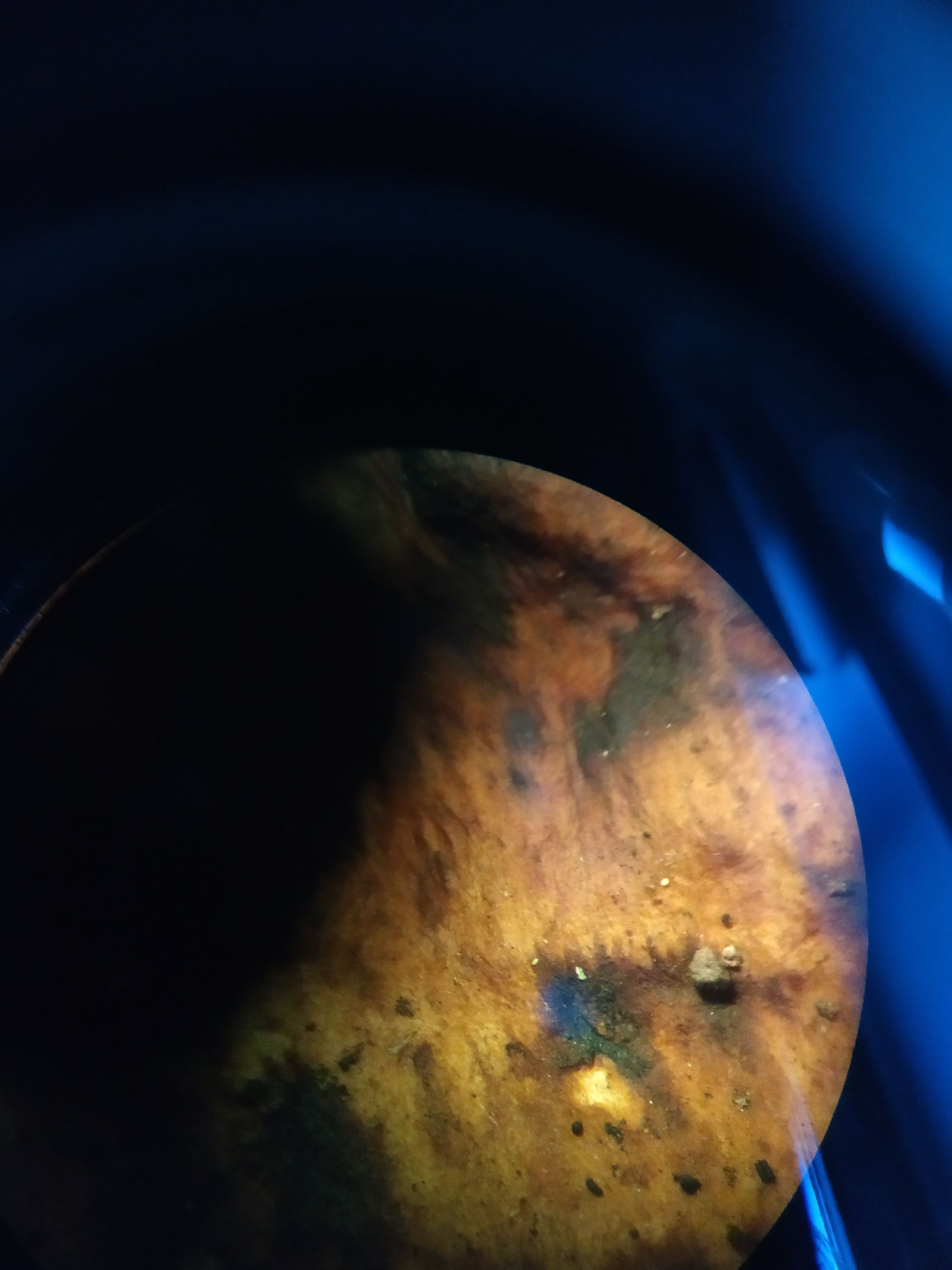No edit summary |
|||
| Line 39: | Line 39: | ||
I examined again the mud samples: microorganisms were still there. | I examined again the mud samples: microorganisms were still there. | ||
[[File:mushroom2-DN.jpg]] | [[File:mushroom2-DN.jpg]] | ||
Revision as of 10:21, 15 November 2020
Introduction to Microscopy | WiSe - Denise Nicolau
|WEEK ONE|
4/11/2020
Introduction to the BIO Lab
I examined a puddle of mud sample and a soil sample collected the evening before, and a purple mold sample that was already in the lab. We saw microorganisms in the mud sample.
Glossary
- magnification: making images appear larger
- resolution: ability to distinguish between two objects
- slide: flat rectangles of thin glass which hold the sample under the microscope
- sample: something you collect to examine
- specimen: the sample on the slide when you look at it through the microscope
- cover slip/cover glass: a smaller and thinner sheet of glass that is placed over the specimen
- light microscope: it uses light in order to see an image
- electron microscope: it uses electron beams to see images (you can see a virus)
- compound microscope: it has two sets of lenses (eyepiece lenses - objective lenses)
- objective lenses: a set of lenses with different magnifications (e.g., 4x, 10x, 40x - 4 times: lowest magnification, 40 times: highest magnification)
- total magnification: is given from the multiplication between eyepiece lens magnification and objective lens magnification (e.g., 10x ocular and 4x objective > 40x total magnification).
- coarse focus and fine focus: two knobs which raise or lower the stage which helps with focusing.
- stage knobs: the move from side to side which helps exploring/scanning the specimen.
- mounting: securing the sample on the slide
- dry mount: a simple kind of mounting where the object is merely placed on the slide (this mounting can be successfully used for viewing specimens like pollen, feathers, hairs, etc.)
- wet mount: the specimen is placed in a drop of water or other liquid held between the slide and the cover slip. (this method is commonly used to view microscopic organisms that grow in pond water or other liquid media).
- disposable pipette
- stage clips: clips which secure the slide
- lens paper: the only paper you can use to wipe lenses
- staining: a technique used to enhance contrast in samples
- immersion oil: able to increase resolution (applicable if you have a 100x objective lens)
6/11/2020
Brogen and I collected different samples in the Ilm Park and examined them in the lab (spider web, tree bark, river water, mushroom spores, wet leaves). We found microorganisms moving in the river water and some little bugs both in the tree bark and in the spider web samples invisible to the naked eye. Mushroom spores were really interesting.
I examined again the mud samples: microorganisms were still there.
|WEEK TWO|


